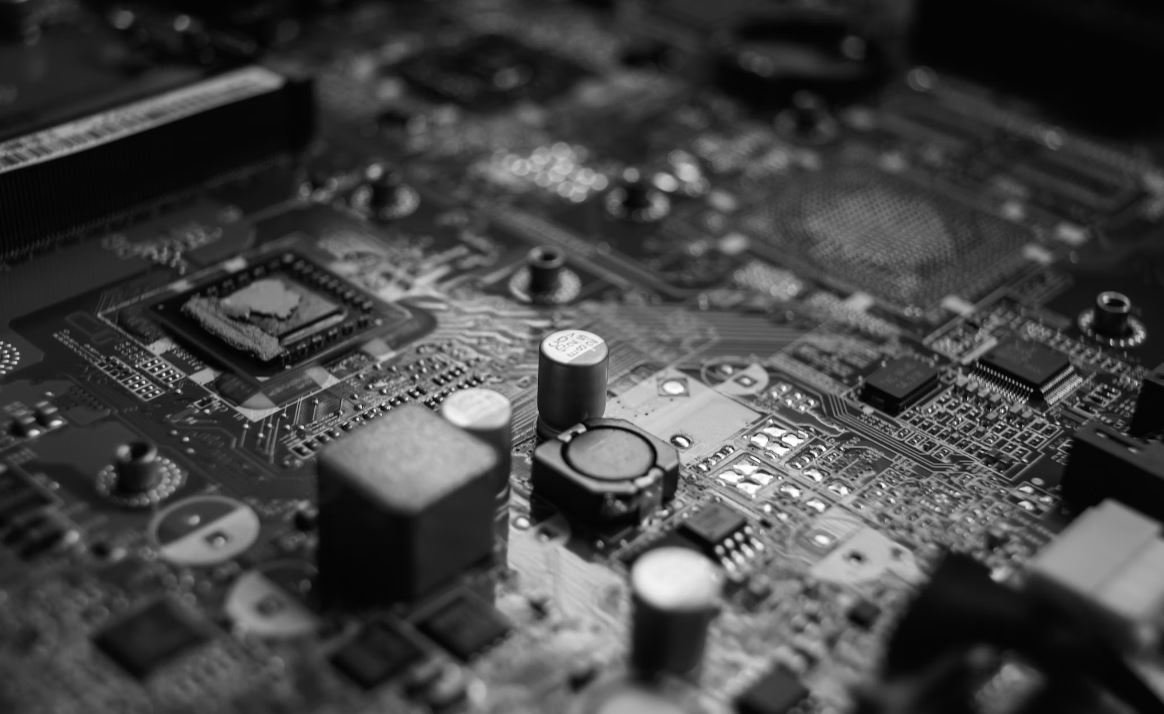AI Applications in Human-Robot Interaction
Advancements in artificial intelligence (AI) technology have led to significant breakthroughs in human-robot interaction. From household chores to industrial manufacturing, AI is being integrated into robots to enhance their capabilities and enable seamless communication with humans. This article explores key AI applications in human-robot interaction and highlights the impact they have on various industries.
Key Takeaways
- AI applications in human-robot interaction are revolutionizing industries such as healthcare, retail, and manufacturing.
- The use of AI-powered robots improves task efficiency, accuracy, and safety.
- Natural Language Processing (NLP) enables robots to understand and respond to human commands and questions.
- Computer Vision allows robots to interpret and respond to visual cues.
AI Applications in Human-Robot Interaction
**AI applications in human-robot interaction** span across various sectors and bring numerous benefits. In healthcare, AI-powered robotic assistants are being used to perform a wide range of tasks, including patient monitoring, surgery assistance, and medication delivery. These robots can gather vital signs, analyze data, and even interact with patients, providing a more efficient and personalized healthcare experience. *Imagine a robot assisting surgeons during complex surgeries, improving precision and reducing the risk of errors.*
AI also plays a crucial role in retail and customer service. Smart robots equipped with NLP capabilities can interact with customers, provide product recommendations, and process payments. These robots enhance the customer experience by offering personalized assistance while freeing up human employees to focus on more complex tasks. *Picture a robot guiding customers through a store, answering their questions, and helping them find the perfect products.*
The manufacturing industry is another area where AI is transforming human-robot interaction. With the integration of AI technologies, robots can perform intricate tasks with precision and speed. They can collaborate with human workers on assembly lines, ensuring efficiency and reducing errors. Additionally, computer vision enables robots to detect defects, enhancing quality control processes. *Imagine a manufacturing floor where robots work alongside humans, seamlessly coordinating tasks and improving productivity.*
Enhancing Communication with Natural Language Processing (NLP)
Natural Language Processing (NLP) is a key component in AI applications for human-robot interaction. **NLP allows robots** to understand and respond to human commands and questions. By processing and analyzing text and speech, robots can generate appropriate responses and carry out tasks effectively. With the help of NLP, robots can engage in meaningful conversations with humans, making interactions more natural and intuitive. *It’s fascinating to see how robots can interpret and respond to spoken language, just like humans.*
**NLP enables robots** to provide customer support, perform voice-activated actions, and even assist individuals with disabilities in their daily tasks. Through machine learning algorithms and data analysis, robots can continuously improve their language understanding and response generation capabilities. This evolution in human-robot communication opens up new opportunities for seamless collaboration and advanced assistance in various domains.
Computer Vision: Interpretation of Visual Cues
Another crucial aspect of AI in human-robot interaction is computer vision. **Computer vision allows** robots to interpret and respond to visual cues, improving their ability to navigate their surroundings and interact with objects. Robots equipped with computer vision technology can recognize faces, gestures, and objects, enabling them to perform tasks that require visual understanding. *It’s incredible how robots can perceive the world visually, just like humans do.*
**Computer vision-based robots** are being utilized in areas such as security, autonomous vehicles, and assistive robotics. They can detect and classify objects, track movements, and even identify anomalies in real-time. These abilities make them valuable assets in surveillance, transportation, and aiding individuals with disabilities. With advancements in computer vision algorithms, robots continue to become more perceptive and adept at interpreting the world around them.
The Future of Human-Robot Interaction
| Industry | AI Applications |
|---|---|
| Healthcare | Robotic Surgery Assistants, Patient Monitoring, Medication Delivery |
| Retail | Customer Service Robots, Product Recommendations, Payment Processing |
| Manufacturing | Collaborative Robots, Quality Control, Task Automation |
The advancements in AI applications for human-robot interaction have the potential to revolutionize numerous industries and transform the way we live and work. As AI technology continues to improve, we can anticipate even more sophisticated robots that seamlessly integrate with our daily lives. *Imagine a future where robots assist us in all aspects of our lives, making our tasks easier and enhancing our experiences.*
Summary
- AI applications in human-robot interaction have a significant impact on various industries and sectors.
- NLP allows robots to understand and respond to human commands, enhancing communication.
- Computer Vision enables robots to interpret visual cues and interact with their surroundings.
- The future of human-robot interaction holds promise for seamless collaboration and advanced assistance.
| AI Applications | Benefits |
|---|---|
| Patient Monitoring | Improved accuracy, personalized care |
| Robotic Surgery Assistants | Enhanced precision, reduced risk of errors |
| Medication Delivery | Efficient and timely medication administration |
With the ongoing advancements in AI, human-robot interaction will undoubtedly continue to evolve and shape the future. The potential applications are vast, and the benefits are significant. From healthcare to retail to manufacturing, AI-powered robots are changing the way we interact with machines and transforming our lives in the process. The integration of natural language processing and computer vision technologies opens up new possibilities for seamless communication and understanding between humans and robots. As AI continues to advance, we can look forward to a future where human-robot interaction becomes the norm. *The possibilities are endless when it comes to the potential of AI in human-robot interaction.*
| AI Applications | Benefits |
|---|---|
| Customer Service Robots | Personalized assistance, improved customer experience |
| Product Recommendations | Enhanced sales, tailored suggestions |
| Payment Processing | Efficient and seamless transactions |

Common Misconceptions
AI in Human-Robot Interaction:
The concept of AI in human-robot interaction is often misunderstood, leading to various misconceptions. Contrary to popular belief, AI applications in this field do not necessarily involve robots that think and act independently. Rather, AI is used to enhance the interaction between humans and robots, making them more intuitive, capable of understanding and responding to human commands, and adapting to different situations.
- AI in human-robot interaction does not involve fully autonomous robots.
- AI is used to enhance the interaction between humans and robots, not replace it.
- AI can be used to make robots more intuitive and adaptable to human needs.
Robots Taking Over Jobs:
One of the most common misconceptions associated with AI in human-robot interaction is the fear that robots will replace humans in various jobs and industries. While AI can certainly automate certain tasks and improve efficiency, it is important to understand that robots are designed to assist humans rather than replace them. AI applications in this field are aimed at enhancing collaboration between humans and robots, enabling them to work together and achieve better outcomes.
- AI is designed to assist humans, not replace them in the workplace.
- Robots can perform repetitive and mundane tasks, freeing up humans to focus on more complex work.
- AI in human-robot interaction can lead to improved collaboration and efficiency in various industries.
Lack of Emotional Intelligence:
Another misconception around AI in human-robot interaction is that robots lack the ability to understand human emotions and respond appropriately. While it is true that robots do not possess emotions like humans do, AI can be used to enable robots to recognize and interpret human emotions by analyzing facial expressions, voice tone, and other cues. This allows robots to respond in a more personalized and effective manner, creating more meaningful human-robot interactions.
- Robots can be programmed with AI to recognize and interpret human emotions.
- AI enables robots to respond in a more personalized and effective manner.
- Robots can analyze facial expressions, voice tone, and other cues to understand human emotions.
Privacy and Security Concerns:
Privacy and security concerns are often associated with AI in human-robot interaction. There is a misconception that AI-powered robots can invade personal privacy and pose a security risk. However, it is important to note that the development of AI applications in this field also takes these concerns into account. Strict privacy protocols and security measures are implemented to protect personal data and ensure that robots operate within ethical boundaries.
- AI applications in human-robot interaction prioritize privacy protection.
- Strict privacy protocols and security measures are implemented to safeguard personal data.
- Risks associated with privacy invasion and security breaches are actively addressed in development.
Replacing Human Interaction:
Lastly, there is a misconception that AI in human-robot interaction is replacing human-to-human interaction. While AI can enhance certain aspects of human-robot interaction, the importance of human-to-human communication and collaboration remains significant. AI is used as a tool to augment and improve the efficiency of human-robot interactions, allowing humans to focus on more complex tasks and enabling robots to fulfill specific roles where human presence alone may not be practical or feasible.
- AI in human-robot interaction is designed to enhance, not replace, human-to-human interaction.
- Human-to-human communication and collaboration remain crucial in various contexts.
- AI enables humans to focus on more complex tasks, while robots fulfill specific roles.

Introduction
Artificial Intelligence (AI) is revolutionizing the field of robotics and has greatly improved human-robot interaction in various domains. From healthcare to manufacturing, AI applications have enhanced the capabilities and responsiveness of robots, making them more efficient and adaptable. This article explores 10 fascinating examples of how AI is being utilized in human-robot interaction.
1. Enhancing Communication
AI technologies enable robots to understand and respond to human speech, gestures, and facial expressions, providing a more natural and effective communication method.
| Application | Description |
|---|---|
| Speech Recognition | Robots understand spoken commands and questions from humans. |
| Facial Recognition | Robots can identify individuals through facial features. |
| Gestural Recognition | Robots interpret human gestures, enhancing non-verbal communication. |
2. Emotion Detection
AI algorithms enable robots to recognize and respond to human emotions, allowing for more empathetic interactions.
| Emotion | Response |
|---|---|
| Happy | Robots display happiness through expressions and voices. |
| Sad | Robots display sympathy and offer comfort. |
| Angry | Robots can defuse situations and provide calming responses. |
3. Personalized Assistance
Utilizing AI techniques, robots can tailor their assistance to individual needs, providing a personalized and efficient experience.
| Application | Capabilities |
|---|---|
| Home Automation | Robots adapt to residents’ preferences and schedules. |
| Healthcare | Robots monitor patients, record vital signs, and administer medications according to personal profiles. |
| Elderly Care | Robots assist with daily tasks based on individual abilities and preferences. |
4. Collaborative Robotics
AI-powered robotic systems are designed to collaborate with humans to accomplish complex tasks more efficiently.
| Industry | Collaborative Task |
|---|---|
| Manufacturing | Robots work alongside human workers on assembly lines. |
| Warehousing | Robots assist in order picking and package transportation. |
| Construction | Robots assist in heavy lifting and precise tasks. |
5. Emotional Companions
AI-driven robots can serve as companions, providing emotional support and enhancing well-being.
| Application | Benefits |
|---|---|
| Therapy | Robots offer comfort, companionship, and distraction in healthcare settings. |
| Educational | Robots assist children with learning, providing personalized interactions. |
| Home | Robots provide emotional support for individuals living alone or facing psychological challenges. |
6. Autonomous Decision-making
AI-enabled robots can analyze sensory data and make independent decisions, reducing the need for human intervention.
| Domain | Examples |
|---|---|
| Transportation | Self-driving cars navigate and react to road conditions. |
| Agriculture | Robots analyze plant health and decide on optimal irrigation and fertilization. |
| Security | Robots detect potential threats and autonomously respond to mitigate risks. |
7. Learning from Human Feedback
AI algorithms enable robots to learn from human interactions and continuously improve their performance and behavior.
| Application | Learning Process |
|---|---|
| Robotic Assistants | Robots adapt based on user feedback and preferences. |
| Gaming | Robots learn strategies by playing against human opponents. |
| Educational | Robots improve teaching techniques based on student engagement and comprehension levels. |
8. Ensuring Safety
AI systems in robotics enhance safety measures for both humans and robots, minimizing potential risks.
| Industry | Safety Measures |
|---|---|
| Industrial | Robots automatically stop upon detecting humans in their proximity. |
| Healthcare | Robots monitor patients’ vital signs to prevent accidents or emergencies. |
| Exploration | Robots utilize AI algorithms to avoid hazardous situations during space or deep-sea exploration. |
9. Improving Accessibility
AI-driven robotics contributes to inclusivity by providing solutions that assist individuals with disabilities.
| Disability | Robotic Solutions |
|---|---|
| Visual Impairment | Robots guide users through environments using sensors and auditory cues. |
| Mobility Impairment | Robots assist with daily tasks, such as opening doors or fetching objects. |
| Cognitive Impairment | Robots reinforce memory through reminders, quizzes, and interactive activities. |
10. Enhancing Work Efficiency
AI-based robotic systems automate tedious and repetitive tasks, optimizing productivity in various industries.
| Industry | Automated Tasks |
|---|---|
| Logistics | Robots sort and arrange packages for efficient delivery. |
| Retail | Robots assist with inventory management and item retrieval. |
| Food Service | Robots automate food preparation processes, ensuring accuracy and speed. |
Conclusion
Artificial Intelligence has significantly advanced human-robot interaction, enabling robots to communicate, understand emotions, and provide personalized assistance. Moreover, AI-based robotics has led to collaborative work environments, emotional companionship, autonomous decision-making, learning from human feedback, enhanced safety, improved accessibility, and increased work efficiency. As AI technologies continue to evolve, the prospects for further development in this field are vast, promising a future where humans and robots coexist harmoniously, complementing each other’s strengths.
Frequently Asked Questions
What are some AI applications in human-robot interaction?
AI applications in human-robot interaction include speech recognition, natural language processing, gesture recognition, emotion detection, task planning, and decision-making algorithms that enable robots to interact with humans in various settings.
What is speech recognition in AI human-robot interaction?
Speech recognition is an AI application that allows robots to understand and interpret human speech. This technology analyzes audio signals and converts them into digital text, enabling robots to respond to verbal commands or engage in conversations with humans.
How does natural language processing contribute to human-robot interaction?
Natural language processing is an AI technique that enables robots to understand and interpret human language in a more advanced way. It helps robots to comprehend context, disambiguate language, and respond appropriately to complex queries or commands.
What is gesture recognition in human-robot interaction?
Gesture recognition is an AI application that allows robots to interpret human gestures and body movements. By analyzing visual data, robots can understand and respond to gestures such as waving, pointing, or thumbs-up gestures, which enhances their ability to communicate with humans.
How does AI enable emotion detection in human-robot interaction?
AI enables emotion detection by using techniques such as facial expression analysis, tone monitoring, and body language interpretation. Robots can identify and respond to human emotions, allowing for more empathetic and adaptive interactions in various scenarios.
What role does task planning play in AI human-robot interaction?
Task planning is a crucial aspect of AI in human-robot interaction as it enables robots to effectively plan and execute tasks based on environmental constraints and user requirements. This includes tasks like navigation, object manipulation, and collaborative activities with human partners.
How do decision-making algorithms contribute to human-robot interaction?
Decision-making algorithms in AI enable robots to make autonomous decisions based on the analysis of relevant data and contextual information. These algorithms help robots respond to unforeseen situations, adapt to changing environments, and make decisions that align with human preferences and goals.
What are some real-world applications of AI in human-robot interaction?
Real-world applications of AI in human-robot interaction include collaborative robots in manufacturing, interactive robots in healthcare, social robots in customer service, assistance robots in homes, and educational robots in classrooms. These applications aim to improve efficiency, safety, and overall user experience.
What are the challenges in implementing AI in human-robot interaction?
Challenges in implementing AI in human-robot interaction include ensuring privacy and security, addressing ethical considerations, designing robots that are socially acceptable and approachable, and preventing biases in AI algorithms that might impact user experiences. Additionally, establishing clear communication and trust between humans and robots is a significant challenge.
How will AI in human-robot interaction evolve in the future?
In the future, AI in human-robot interaction is likely to advance further, incorporating more sophisticated algorithms, improved natural language understanding, enhanced emotion detection, and increased autonomy. Collaborative and interactive robots are expected to become more commonplace in various industries and daily life, contributing to innovative ways of human-robot interaction.





